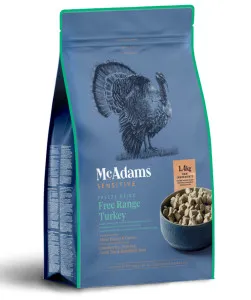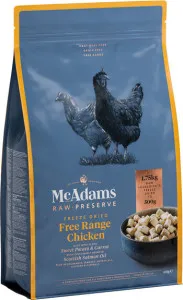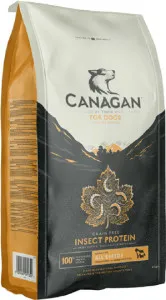Safe Dog Food Storage Tips for 2025: Keep Your Dog’s Food Fresh
As a responsible pet owner, ensuring your dog's food stays fresh and safe is just as important as choosing the right brand. Proper storage prevents spoilage, maintains nutritional value, and keeps harmful bacteria at bay. Whether you feed kibble, wet food, or raw meals, these dog food storage tips will help you keep your pup’s meals fresh and healthy in 2025 and beyond.
Why Proper Dog Food Storage Matters
Storing dog food correctly isn’t just about convenience—it’s about your dog’s health. Poor storage can lead to:
- Rancidity : Exposure to air and heat causes fats to spoil, making food less palatable and potentially harmful.
- Mold growth : Moisture encourages mold, which can produce dangerous toxins.
- Pest infestations : Open bags or containers attract insects and rodents.
- Nutrient loss : Light, heat, and air degrade essential vitamins and minerals over time.
- Use a high-quality, food-grade container : Look for BPA-free plastic, stainless steel, or glass with a tight-sealing lid.
- Keep the original bag (if resealable) : Many bags have built-in freshness liners—place the entire bag inside the container for extra protection.
- Avoid clear containers : Light accelerates nutrient breakdown. Opt for opaque or UV-resistant materials.
- Transfer leftovers to an airtight container : Use glass or BPA-free plastic with a secure lid.
- Label with the date opened : Most wet food lasts 3–5 days in the fridge.
- Freeze portions for long-term storage : Scoop individual servings into ice cube trays or silicone molds for easy thawing.
- Store in the freezer at 0°F (-18°C) or below : Thaw only what you need for 1–2 days in the fridge.
- Use leak-proof containers : Prevent cross-contamination in your freezer with sealed bags or containers.
- Never refreeze thawed raw food : Bacteria multiply quickly once thawed—discard uneaten portions after 48 hours.
- A cool, dry place : Pantries or closets away from stoves, dishwashers, or direct sunlight work best.
- Avoid garages or sheds : Temperature fluctuations and humidity promote spoilage.
- Use silica packs : Toss a few moisture absorbers into your kibble container to prevent clumping.
- Label bags and containers with purchase dates .
- Buy smaller bags if your dog eats slowly : Kibble stays fresh for about 6 weeks after opening.
- Check expiration dates : Even unopened food loses nutrients over time.
- Wash bowls after every meal : Bacteria from saliva can contaminate fresh food.
- Use stainless steel or ceramic bowls : They’re less porous than plastic, which can harbor germs.
- Store bowls upside down : Prevent dust or pests from settling inside.
- Off smells : Rancid fats smell sour or musty.
- Discoloration or mold : Toss food with unusual spots or fuzz.
- Changes in texture : Kibble shouldn’t feel sticky or overly brittle.
- Vacuum-sealed containers : Remove air to extend shelf life. Smart pet food dispensers : Some models track expiration dates and portion sizes.
- Portion-control systems : Pre-measure meals to minimize container openings.
By following these best practices, you’ll ensure every bowl of food is as nutritious and safe as the day you bought it. For more insights on pet nutrition, check out our Pet Food Analyzer .
1. Store Kibble in an Airtight Container
Kibble is convenient but vulnerable to oxidation. Once opened, the original bag isn’t enough to keep air out. Here’s how to store it properly:
2. Refrigerate or Freeze Wet Food After Opening
Canned or pouched wet food has a short shelf life once opened. Follow these steps to extend its freshness:
3. Keep Raw Food Frozen Until Ready to Use
Raw dog food is highly perishable. If you follow a raw diet, these tips are critical:
4. Control Temperature and Humidity
Heat and moisture are the enemies of freshness. Ideal storage conditions include:
Recommended Products

McAdams Freeze Dried Free Range Turkey is an excellent choice for safe dog food storage tips for 2025: keep your dog’s food fresh. This dog food contains Boneless Free Range Turkey 86.5% and other high-quality ingredients that promote overall health.

McAdams Freeze Dried Free Range Chicken is an excellent choice for safe dog food storage tips for 2025: keep your dog’s food fresh. This dog food contains Boneless Free Range Chicken 86% and other high-quality ingredients that promote overall health.

Canagan Insect is an excellent choice for safe dog food storage tips for 2025: keep your dog’s food fresh. This dog food contains Freshly Prepared Insects (27%)* and other high-quality ingredients that promote overall health.
5. Practice FIFO (First In, First Out)
Rotate your stock to ensure older food gets used first:
6. Keep Feeding Bowls Clean
Storage isn’t just about the food—it’s about how you serve it too:
7. Watch for Signs of Spoilage
Even with perfect storage, always inspect food before serving:
8. Invest in Smart Storage Solutions
Upgrade your storage with 2025’s latest innovations:
Final Thoughts
Proper dog food storage is a simple yet often overlooked part of pet care. By following these tips, you’ll protect your dog from foodborne illnesses, preserve nutritional quality, and reduce waste. For more expert advice on pet nutrition and product recommendations, explore our Pet Food Analyzer to make informed choices for your furry friend.
Your dog relies on you for safe, healthy meals—take these small steps today to ensure their food stays as fresh and nutritious as possible. After all, a well-fed pup is a happy pup!
